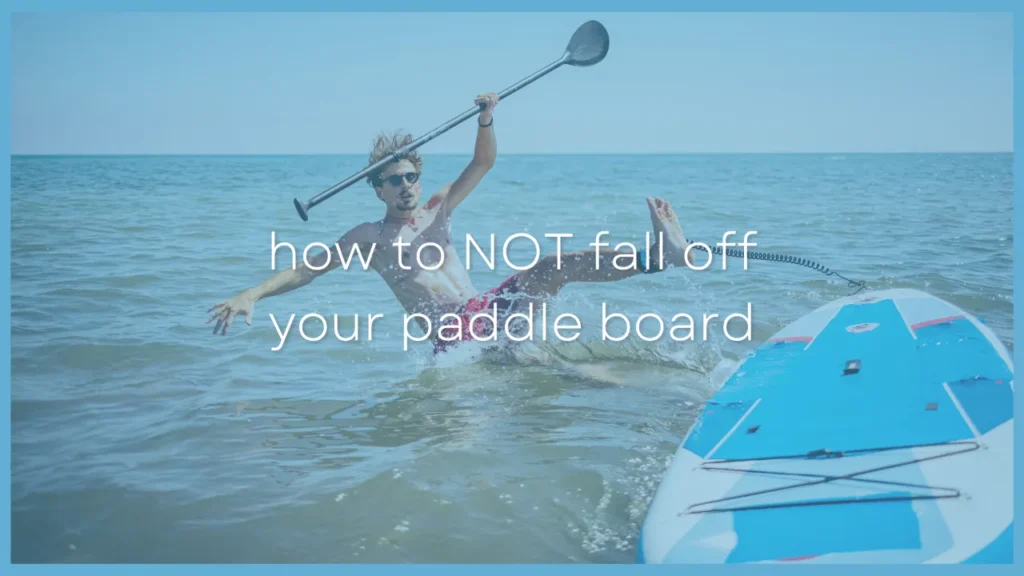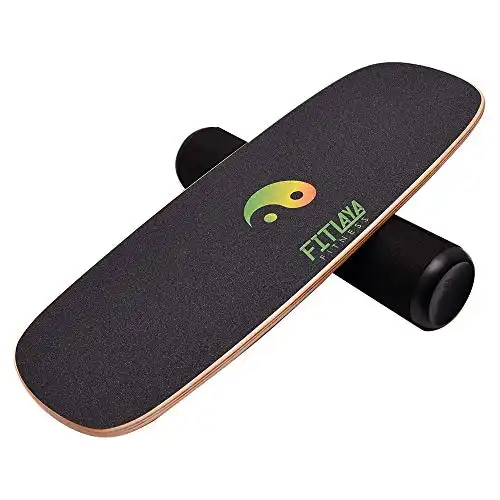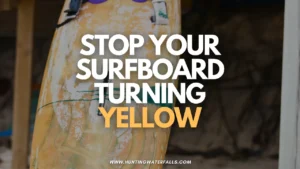Paddleboarding is one of my favorite things to do in summer. There’s nothing like cruising along a river or a lakeside on a warm sunny day.
When I first started paddle boarding though I used to fall off ALL THE TIME. That is until I learned a few helpful techniques that helped me to stay more stable on the board and stop me from falling in so often.
To avoid falling off your paddleboard make sure to say calm and relaxed. Put your oar in the water to help with stability as you stand up and center yourself on the board. Keep your knees slightly bent and focus your eyes on the horizon (not your feet).
If you ever feel unstable just drop to your knees and take some time to regain your balance.
To improve your balance over time practice is the #1 main thing you can do. But even if you can’t get on a paddle board regularly then core exercises, leg strength exercises and balancing exercises such as standing on one leg or using a balance board will all help you gain better balance when you are out on the water.
1. Stay Calm and Relaxed
First of all, don’t stress out! A lot of being stable on your paddle board is being loose and calm.
Stress makes everything harder and consumes the attention you’d otherwise spend on making the proper adjustments to stay up.
Paddle boarding is much more about developing the right feel rather than the right rational analysis.
Even if you fall, don’t sweat it, just get right back up!
The falls even become fun with the right attitude.
2. Put Your Oar In The Water When You Stand Up and Start With Small Strokes

Next, put your oar in the water as soon as you’ve stood up on the paddle board.
This adds a little more stability, making a “tripod” of sorts, even if water is not the most stable of substances.
One of the mistakes I made early on was trying to do big strokes and move super quickly straight away.
That effortless glide that expert paddle boarders achieve will come with time. But to begin start with smaller and slower strokes until you get the hang of it.
Make sure you've got your paddle board facing forwards and you've also got the paddle facing the right way with the power face entering into the water first.

Just don’t lean too much into your oar when you make your strokes as that can cause you to fall in too.
3. Center Yourself on Your Paddle Board
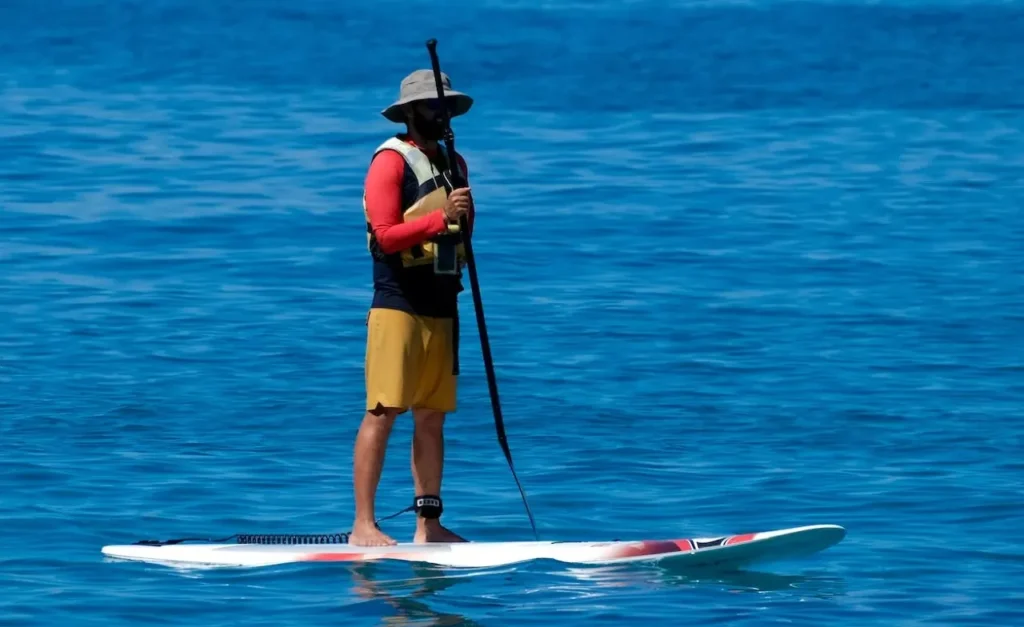
Paddle boards are built to be balanced, but the trick is to know where to be.
Unlike surfboards you don't want to stand sideways on a paddle board but rather facing forwards.
You’ll want to center yourself width-wise on the board around the center of the board with your feet shoulder width apart and facing forward.
There is usually a foot grip pad which helps you know exactly where to put your feet.
Make sure you're not too far back that the tail is getting submersed in the water and not too far forward that the nose is going into the water.
This is the “sweet spot” for balance and not the literal center of the board.
4. Bend Your Knees
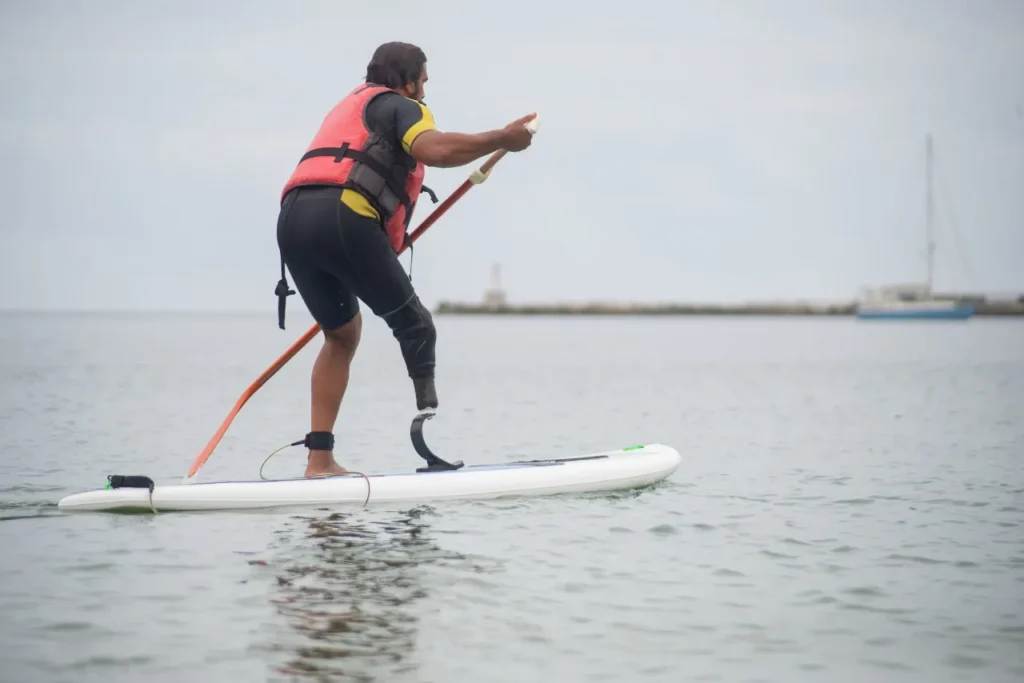
Keep your center of gravity low by bending your knees a little.
This is also something you will develop a feel for and the less you stress, the easier it will be to feel that “a-ha” moment when you get it just right.
Keeping your knees a little bent also helps adjust for any wobbles from waves, the current, or other external factors.
5. Look at The Horizon (Not At Your Feet or the Oar)
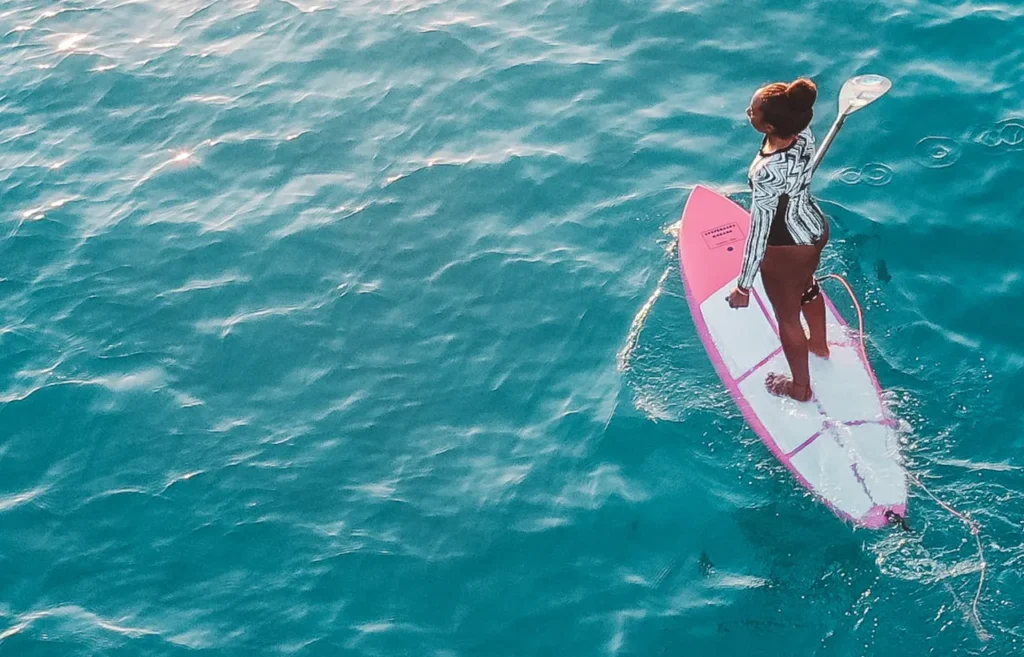
A common mistake beginners make when paddle boarding is they spend all their time staring at their feet or staring at their oar as it enters the water. This can lead you to become unbalanced and fall off your board easily.
Keep your eyes on the horizon. Doing this helps maintain your equilibrium.
The horizon stays stable and doesn't move around and this helps you to get your bearings and keep your balance.
You also tend to move towards what you're looking at so look at the horizon in the direction you want to go.
6. Keep Moving
Similar to how a bicycle works on land. A strong forward momentum more easily resists opposing forces. I
t’s trickier to stay balance at lower speeds because various opposing forces can more easily overpower the lower forward momentum.
Maintain a good, swift speed, but don’t get overconfident.
7. If You Feel Unstable Drop To Your Knees
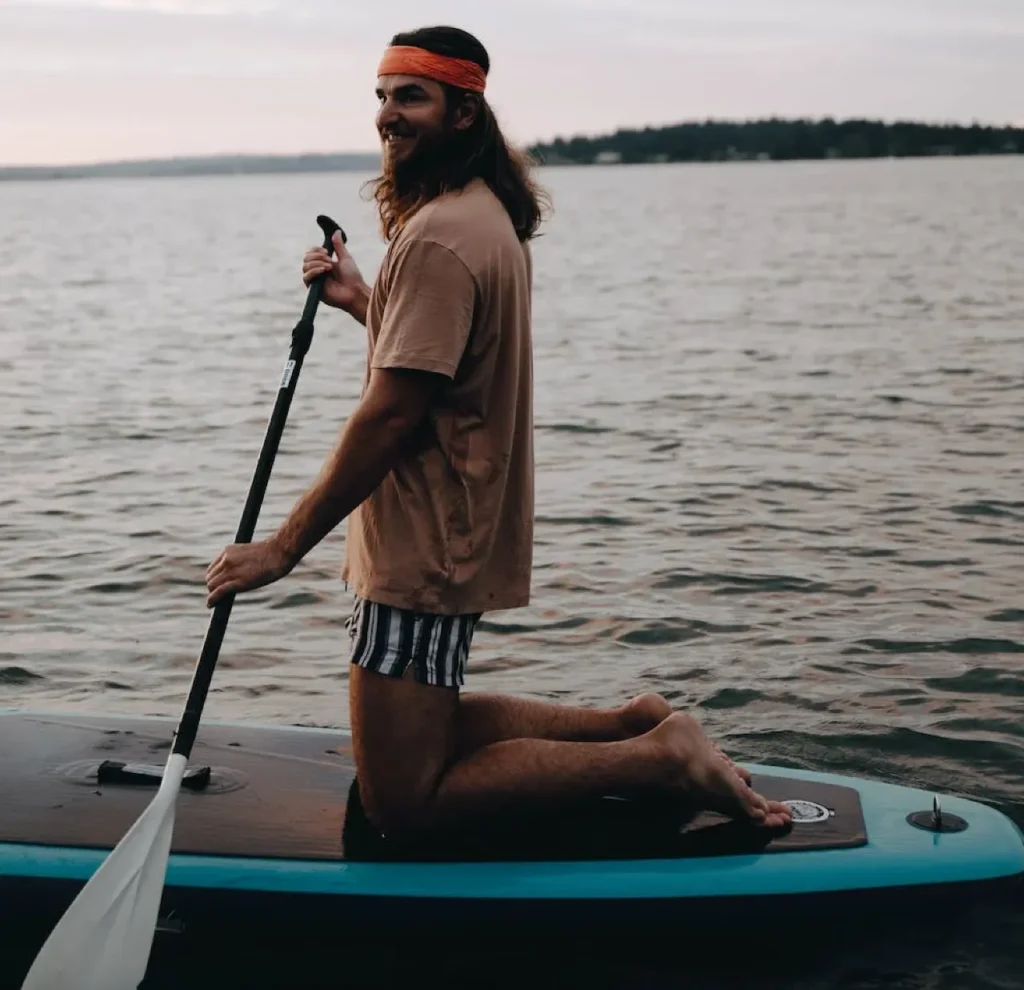
If you feel yourself starting to wobble too much, drop (carefully) to you knees.
This will lower your center of gravity and a lot more stability.
Do this for as long as you need to then repeat the above steps to help get back on track.
It also helps to start paddling while kneeling because the momentum will add to your overall stability.
8. Improve Your Balance with Exercises

Last of all, do some balance-boosting exercises in your spare time!
Core strengthening through exercises like planks is one of the first best steps.
Strengthening your lower body with squats, leg curls, and deadlifts is another big help.
Even simple things like standing on one foot while doing ordinary tasks can help boost your balance. Or you can invest into balance boards that help you to gain incredible balance whilst standing in the same position you do whilst on your paddle board.
Something like this balance board trainer from Fitlaya is a great tool to improve your core strength, balance and coordination all at once.

